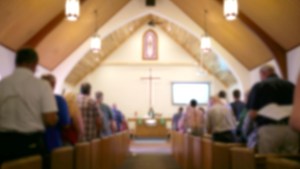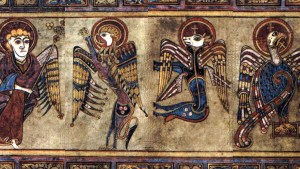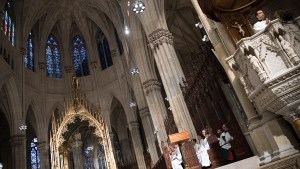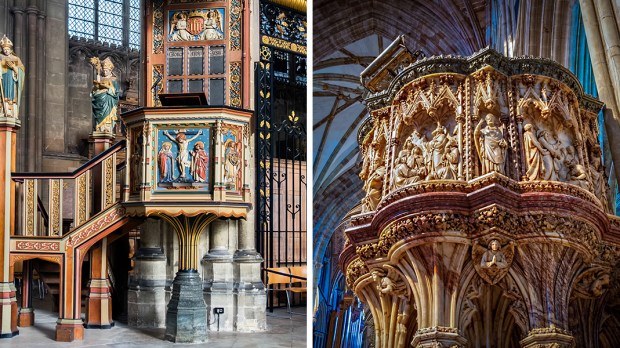As the celebration of Mass developed over the centuries, there grew a need in the Roman Catholic Church to have a centralized location where the priest could proclaim the Gospel and preach a homily.
For most of Christian history, pews did not exist, and the people in the congregation remained standing or kneeling throughout Mass. When it came time for the priest to address the congregation, he needed an elevated spot that could be seen by everyone.

Read more:
This is why church pews were invented
The pulpit was subsequently developed and became very popular for many centuries. The word stems from the Latin pulpitum, and was originally used to denote a theatrical stage. In medieval churches it became a platform primarily used for preaching. The pulpit was located near the center of the nave (the place where the people stood) and was well elevated, to allow the priest to adequately address his congregation.
While it was primarily developed for a practical purpose, medieval artists used the pulpit as a canvas to teach the people various spiritual truths. Most commonly, pulpits would be carved with representations of the four evangelists (Matthew, Mark, Luke and John), highlighting the fact that the Gospel for Mass was pronounced from the pulpit.

Read more:
Ox, eagle, lion, man: Why and how are the Evangelists associated with these creatures?
A sounding-board was often placed above the pulpit, and underneath it the Holy Spirit was carved to represent how the Holy Spirit is the one who inspired the four evangelists in writing their gospels.
In some artistic traditions, the pulpit would have spires, which beckoned the congregation to dwell on higher things, raising their hearts to God.
Elsewhere the pulpit was designed to look like a ship. This visibly put the priest as the pilot of the congregation, leading them to the distant shores of Heaven.
Other pulpits feature scenes from thelife of Christ, again reminding the people of various biblical events that are tied to the Gospel preached at the pulpit.
With the introduction of electronic microphone systems, the practical reason for the pulpit was obsolete, and the structure was left aside in many churches. Yet, some still use the pulpit, not for its ability to project sound, but as a visible reminder of the importance of the Word of God. It remains the “table of the Word,” and leads to the “table of the Eucharist,” where the words of the Gospel are made incarnate as the Eucharistic bread and wine transforms into the body, blood, soul, and divinity of Jesus Christ.

Read more:
What’s the difference between an ambo and a pulpit?

Read more:
What was Mass like for the early Christians?

